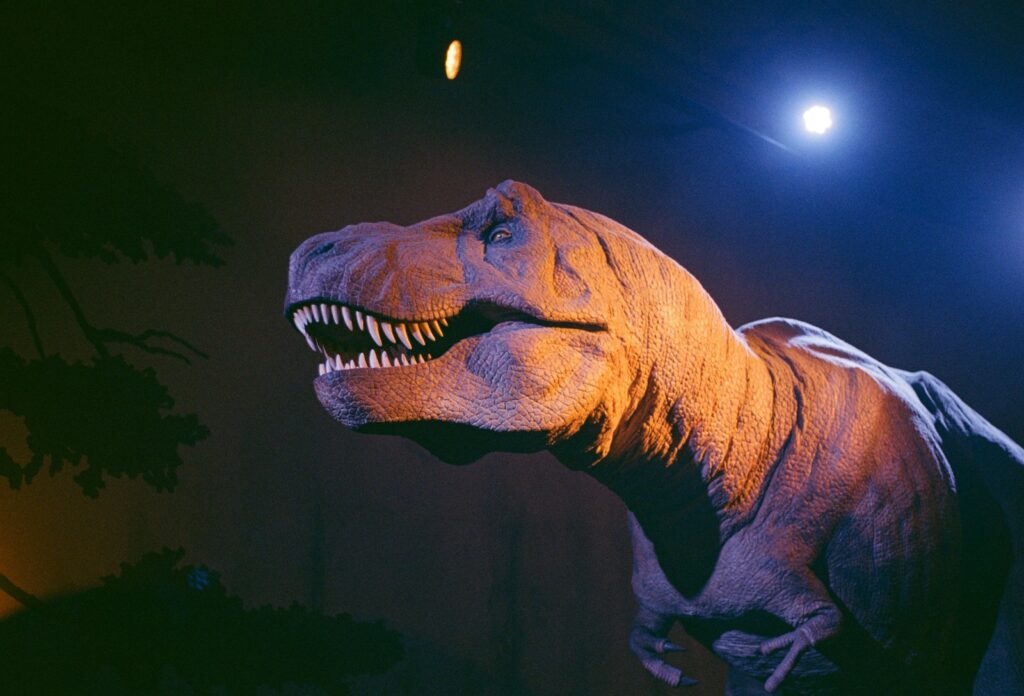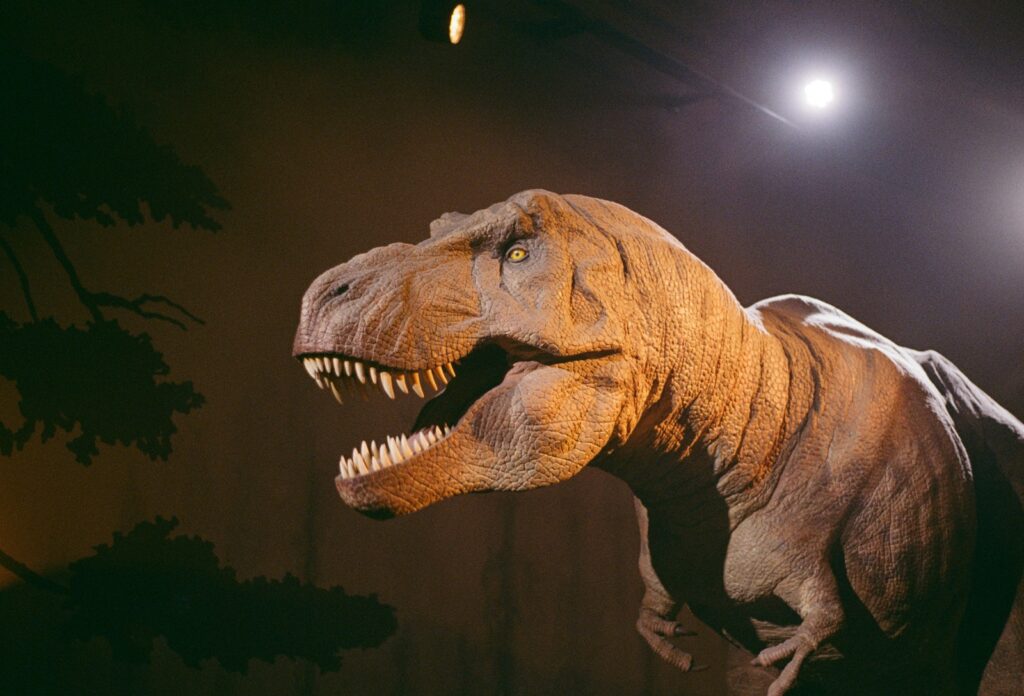The tyrannosaurus rex has captivated our imagination since its discovery, standing tall in museum halls and dominating prehistoric scenes in films and documentaries. For decades, paleontologists have studied the remains of this apex predator, attempting to accurately determine its true size and proportions. Recent discoveries and advanced analytical techniques are challenging long-held assumptions about T. rex dimensions, suggesting this iconic dinosaur may have been even more imposing than previously believed. This article explores the evolving understanding of the T. rex’s size, examining both historical perspectives and cutting-edge research that continues to reshape our view of this magnificent creature.
The Historical Perspective on T. Rex Size

When the Tyrannosaurus rex was first described by Henry Fairfield Osborn in 1905, scientists had limited fossil material to work with, leading to conservative estimates of its size. Early reconstructions depicted the T. rex at around 12 meters (39 feet) in length and weighing approximately 6 tons. These initial estimates were based primarily on fragmentary remains, with paleontologists having to extrapolate much of the animal’s dimensions. Throughout most of the 20th century, these figures remained relatively stable in scientific literature, despite occasional discoveries suggesting greater potential sizes. The limited number of specimens and primitive measuring techniques of the era created a situation where the T. rex’s true dimensions remained somewhat speculative, with scientists erring on the side of caution rather than overestimation.
Famous T. Rex Specimens and Their Measurements

Several well-preserved T. rex specimens have provided crucial data points for understanding the dinosaur’s size. “Sue,” discovered in 1990 and housed at Chicago’s Field Museum, remained for years the largest and most complete T. rex skeleton, measuring approximately 12.3 meters (40.5 feet) long. “Stan,” unearthed in South Dakota in 1987, stands about 11.7 meters (38.5 feet) long. “Scotty,” discovered in Saskatchewan, Canada, and announced in 2019, may exceed even Sue in size, with researchers estimating it was 13 meters (43 feet) long and potentially weighing over 8.8 metric tons. “Trix,” a female specimen displayed in the Netherlands, measures about 12.5 meters (41 feet) in length. These landmark specimens have formed the backbone of our understanding of T. rex dimensions, though even among these well-studied individuals, significant size variations exist.
Advanced Measuring Techniques Changing Our Understanding

The advent of digital technologies has revolutionized how paleontologists measure and analyze dinosaur remains. Three-dimensional laser scanning now allows for precise volumetric measurements of fossils without risk of damage, capturing details that might be missed by traditional measuring tools. Computer tomography (CT) scanning provides insights into internal bone structures, helping scientists better understand growth patterns and maximum size potential. Digital modeling and simulation software enables researchers to test biomechanical constraints, ensuring that size estimates are biologically plausible. These technological advances have allowed paleontologists to revisit previously studied specimens with greater precision, sometimes revealing that earlier measurements underestimated certain dimensions. The combination of these techniques has created a more robust methodology for determining the T. rex’s true size, often resulting in upward revisions of previous estimates.
Weight Estimation Challenges

Accurately determining the T. rex’s weight presents unique challenges compared to measuring skeletal dimensions. Early weight estimates relied heavily on simple volume calculations that often failed to account for the complex internal structure of dinosaur bodies. Modern approaches using sophisticated volumetric models can now account for variations in tissue density, the presence of air sacs (similar to those in modern birds), and other anatomical nuances that affect overall mass. Some recent studies have employed comparative anatomy with living relatives like birds and crocodilians to refine these estimates. The latest research suggests adult T. rex individuals likely weighed between 7-10 metric tons, significantly heavier than mid-20th-century estimates of 4-6 tons. This weight reassessment has profound implications for understanding the T. rex’s metabolism, hunting capabilities, and ecological role.
Growth Patterns and Maximum Size

T. rex exhibited remarkable growth patterns that have only recently been understood through histological studies of bone microstructure. Research indicates these dinosaurs experienced rapid growth during adolescence, gaining potentially more than 2 kilograms (4.4 pounds) per day during peak growth phases. This accelerated growth continued until approximately 20 years of age, with individuals reaching sexual maturity around 15-18 years. Studies of growth rings in bones (similar to tree rings) suggest T. rex could potentially live to about 30 years in ideal conditions. Interestingly, the largest known specimens appear to be 25-30 years old, indicating that maximum size was achieved later in life than previously thought. This growth pattern suggests that truly massive individuals may have been more common than the fossil record currently indicates, as preservation bias favors younger individuals that died before reaching maximum size.
Sexual Dimorphism and Size Variation

The question of sexual dimorphism – size differences between males and females – remains contentious in T. rex research. Some paleontologists propose that robust specimens with thicker bones represent females, while more gracile individuals might be males, though this pattern would be opposite to that seen in many modern birds. Others suggest the size variations observed might simply represent individual differences or temporal changes across the species’ 2-million-year existence. Recent statistical analyses of femur circumferences across multiple specimens hint at a bimodal distribution that could indicate sexual dimorphism, with one sex potentially growing 10-15% larger than the other. If confirmed, this would mean that estimates of T. rex’s maximum size might need to be adjusted based on whether the largest known specimens represent the larger or smaller sex.
Geographic Variation in T. Rex Size

Emerging evidence suggests T. rex individuals from different geographic regions may have achieved different maximum sizes. Specimens discovered in northern latitudes of North America, particularly Canada and Montana, appear, on average, larger than those found in more southern regions like New Mexico and Texas. This pattern might reflect Bergmann’s rule, an ecological principle where animals tend to be larger in colder climates to conserve heat more efficiently. Alternatively, these size differences could relate to variation in available food resources, with northern ecosystems potentially providing more abundant prey. Some researchers have proposed that these geographic variations might even represent subspecies or chronospecies of T. rex that evolved different body sizes in response to local conditions. Understanding this geographic variation adds another layer of complexity to determining the “true” maximum size of the T. rex as a species.
Recent Discoveries Pushing Size Limits

Several discoveries in the past decade have challenged previous upper limits on T. rex size. Fragmentary remains from Montana discovered in 2016 suggest an individual potentially 13-15% larger than Sue, though the incomplete nature of these fossils makes precise measurements difficult. In 2019, Canadian researchers announced that “Scotty” might represent the largest well-documented T. rex, with a robust frame and an estimated weight of 8.8-10.5 tons. Leg bone measurements from a specimen nicknamed “Titus,” still being prepared and studied, hint at an individual that might exceed even these dimensions. These recent findings suggest that exceptional individuals might have reached sizes significantly beyond what was previously thought possible, though they likely represent the extreme upper end of the species’ size range rather than the average.
Comparing T. Rex to Other Giant Theropods

While the T. rex was undoubtedly massive, it wasn’t the only gigantic predatory dinosaur to evolve. Spinosaurus from North Africa likely exceeded T. rex in length at potentially 15-18 meters (49-59 feet), though its semi-aquatic lifestyle and lighter build resulted in a different body mass distribution. Giganotosaurus and Carcharodontosaurus from South America and Africa, respectively, rivaled the T. rex in size, with some specimens suggesting similar or slightly larger dimensions. Tyrannotitan from Argentina possessed a massive frame potentially comparable to the largest T. rex individuals. What distinguishes the T. rex among these giants was its extraordinarily robust build, with the thickest limb bones and most massive skull relative to body size, resulting in the greatest estimated mass despite not necessarily being the longest theropod. This comparison highlights that while the T. rex might not have been the largest predatory dinosaur in every dimension, it likely was the most massive in terms of sheer weight.
Biomechanical Constraints on Maximum Size

Physics and biology impose limits on how large any terrestrial animal can grow, and the T. rex likely approached these boundaries. The square-cube law dictates that as an animal increases in size, its weight (volume) increases at a faster rate than its bone strength (cross-sectional area), creating structural challenges. T. rex evolved several adaptations to manage these constraints, including hollow bones that reduced weight while maintaining strength and a relatively short, stocky body compared to some other large theropods. Muscle attachment sites on T. rex bones suggest tremendously powerful muscles necessary to move its massive frame. Computer simulations of T. rex locomotion indicate that beyond certain size thresholds, fundamental changes to body proportions would have been necessary to maintain mobility. These biomechanical studies suggest that the largest known T. rex specimens were approaching the theoretical maximum size possible for their body plan, explaining why no land predator before or since has substantially exceeded these dimensions.
The Impact of Nutrition and Environment on Size

Environmental factors likely played a crucial role in determining whether individual T. rex reached their maximum potential size. Access to abundant prey would have been essential for sustaining the massive caloric requirements needed during rapid growth phases. Studies suggest adult T. rex may have required hundreds of pounds of meat weekly to maintain their metabolism. The Late Cretaceous ecosystem of North America provided rich hunting grounds with abundant large herbivorous dinosaurs, particularly horned dinosaurs and hadrosaurs. Climate fluctuations during the T. rex’s 2-million-year existence may have influenced prey availability and consequently affected average and maximum sizes achievable. Some researchers propose that the very largest specimens represent individuals that lived during particularly resource-rich periods, with optimal conditions allowing them to reach size potentials that remained unrealized in less favorable circumstances.
Future Research Directions

Several promising research avenues may further refine our understanding of the T. rex’s true size potential. Ongoing fieldwork continues across western North America, with new specimens discovered annually that may provide additional data points for size analysis. Advanced growth studies using synchrotron imaging to examine bone microstructure at unprecedented detail could better reveal how the T. rex grew and when it reached its maximum size. Refined body mass estimation techniques incorporating artificial intelligence to analyze bone stress patterns might provide more accurate weight calculations than currently possible. Comprehensive population studies analyzing all known specimens with standardized measurements could reveal clearer patterns of size distribution, including potential sexual dimorphism. As technology advances and more specimens are discovered, our understanding of the T. rex’s size will likely continue to evolve, potentially revealing that this iconic dinosaur was even more impressive than currently believed.
Conclusion: The Evolving Picture of T. Rex Dimensions

The true size of the Tyrannosaurus rex continues to be refined as discoveries and methodologies emerge. Current evidence suggests that maximum individuals were indeed larger than early 20th-century estimates indicated, with the largest specimens potentially reaching 13 meters in length and weighing close to 10 metric tons. While these figures represent the upper limits rather than average sizes, they demonstrate that the T. rex pushed the boundaries of how large a bipedal land predator could evolve. The ongoing adjustments to our understanding of T. rex dimensions remind us that paleontology is a dynamic science, with each new finding potentially reshaping our view of prehistoric life. As research continues, the T. rex’s reputation as one of the most formidable predators to ever walk the Earth only grows stronger, with its impressive size being just one aspect of what makes this dinosaur an enduring scientific and cultural icon.




